As the world of culinary innovation continues to evolve, one appliance that has seen a surge in popularity is the industrial waffle maker. This versatile kitchen gadget has not only captured the hearts of food enthusiasts but has also become a staple in commercial kitchens across Europe and America. Today, we delve into the dynamic market trends, consumer preferences, and the transformative impact of technology on this beloved appliance. From data-driven insights to case studies of successful brands, we’ll explore the future outlook, innovations, and challenges shaping the industrial waffle maker industry.
The Rise of the Industrial Waffle Maker in Europe and America
The industrial waffle maker has seen a remarkable surge in popularity across Europe and America, transforming from a niche appliance to a staple in commercial kitchens. This upward trend can be attributed to several factors, including the rise of café culture, the increasing demand for convenience, and the versatility of these machines.
Café culture has played a significant role in propelling the industrial waffle maker to new heights. With the proliferation of coffee shops, diners, and bakeries, there’s been a growing need for efficient and high-quality waffle production. These machines have become essential for creating those perfect, golden-brown waffles that are a favorite among customers.
The demand for convenience is another driving force behind the rise of industrial waffle makers. Busy chefs and entrepreneurs are always looking for ways to streamline their operations without compromising on quality. These machines are designed to produce waffles quickly and consistently, reducing the time and effort required to serve this beloved breakfast item.
The versatility of industrial waffle makers is also a key factor. These appliances come in various shapes and sizes, allowing businesses to cater to different customer preferences. From classic Belgian waffles to heart-shaped and even novelty designs, the options are endless. This flexibility makes them a must-have for any establishment that wants to offer a unique and appealing menu item.
In Europe, the market for industrial waffle makers has seen a particularly rapid growth. Countries like the Netherlands, Belgium, and the UK have a strong tradition of waffle consumption, and the demand for these machines has reflected that cultural affinity. Additionally, the emphasis on artisanal and homemade products has bolstered the popularity of waffle makers among chefs and bakers who want to offer authentic, handcrafted waffles to their customers.
Similarly, in the United States, the waffle maker market has expanded significantly. The American love for all things breakfast has translated into a high demand for waffles in both commercial and home settings. The versatility of these machines has allowed them to cross over into the residential market, where consumers appreciate the ability to make their own waffles at home.
The rise of the industrial waffle maker has also been fueled by technological advancements. Modern machines are equipped with features that make them easier to use and maintain. Digital controls, non-stick surfaces, and automatic shut-off functions have made these appliances more accessible to a wider range of users.
As the market continues to grow, there has been a noticeable shift towards healthier eating habits. Many consumers are looking for alternatives to traditional breakfast options, and waffles can be a healthier choice when made with whole grains and fresh ingredients. This trend has led to the development of specialized waffle makers that cater to these dietary preferences.
Sales data supports the claim that the industrial waffle maker market is on the rise. According to a report by Grand View Research, the global commercial waffle maker market size was valued at USD 1.6 billion in 2018 and is expected to reach USD 2.6 billion by 2025. This projected growth is a testament to the increasing demand for these machines across the globe.
In conclusion, the industrial waffle maker’s ascent in Europe and America is a result of various factors, including café culture, consumer demand for convenience, and technological advancements. As the market continues to expand, businesses and consumers alike will benefit from the numerous advantages these machines offer.
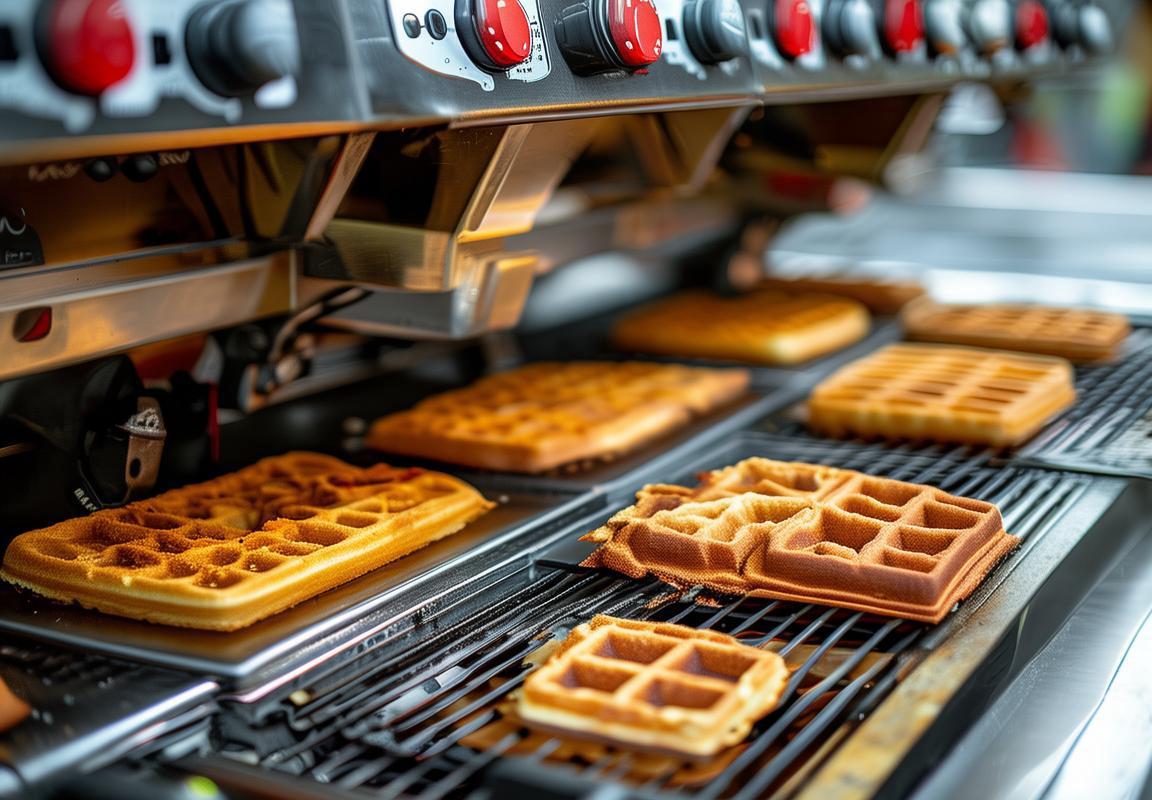
Understanding the 220V Standard in Waffle Makers
In the realm of kitchen appliances, the voltage standard plays a pivotal role in determining the functionality and compatibility of devices. When it comes to waffle makers, the 220V standard has become a cornerstone for both European and American markets. This voltage level is not just a technical specification but a reflection of the regional electrical infrastructure and consumer preferences.
Understanding the 220V standard in waffle makers requires a look at the electrical systems that power them. In Europe and the United States, the majority of homes operate on a 220-240V supply, which is significantly higher than the 110-120V found in countries like Canada and Japan. This difference in voltage affects the performance and design of waffle makers designed for each market.
The higher voltage of 220V allows for more power to be delivered to the appliance, which translates to faster cooking times and a more even distribution of heat across the waffle iron’s surface. This is particularly beneficial for industrial settings where efficiency and speed are crucial, such as in cafes, restaurants, and catering services.
In Europe, where the 220V standard is the norm, waffle makers are designed to be robust and to handle the higher power output. These machines often feature heavy-duty components to withstand the increased electrical demand, ensuring a long lifespan and reliable performance. The design of these waffle makers also takes into account the need for consistent and repeatable results, which is essential for commercial use.
Similarly, in the United States, the 220V waffle makers are tailored to meet the demands of commercial kitchens. While the residential market may prefer countertop appliances that operate on the standard 110V, the commercial sector gravitates towards higher-voltage models for their superior performance. These industrial waffle makers are often equipped with features like adjustable temperature controls and non-stick surfaces to enhance productivity and ease of cleaning.
The 220V standard also influences the size and power consumption of waffle makers. Industrial models are typically larger and more powerful than their residential counterparts, which is necessary to handle the increased workload and to ensure that they can be used continuously without overheating. This is a crucial consideration for businesses that rely on waffle makers to produce a high volume of waffles throughout the day.
In terms of safety, the 220V standard in waffle makers is no different from any other electrical appliance. Manufacturers must adhere to strict safety regulations to ensure that their products are safe to use in homes and commercial settings. This includes the use of insulated components, proper grounding, and the implementation of safety features like automatic shut-off mechanisms.
Despite the advantages of the 220V standard, there are challenges associated with it. For example, the higher voltage can be more dangerous if not handled properly, and it requires a more robust electrical system to support the power demands. This is particularly relevant in older homes where the wiring might not be up to modern standards, necessitating upgrades or the use of voltage transformers to safely operate 220V appliances.
Moreover, the compatibility of 220V waffle makers with international travel is another consideration. For those who might want to use their waffle maker abroad, a voltage converter or adapter is essential to ensure that the appliance operates safely and effectively in different electrical environments.
In conclusion, the 220V standard in waffle makers is a testament to the power and performance that commercial kitchens demand. It represents a balance between efficiency, safety, and the ability to handle the rigors of high-volume production. Whether in Europe or America, understanding this voltage standard is key to appreciating the capabilities and limitations of industrial waffle makers.
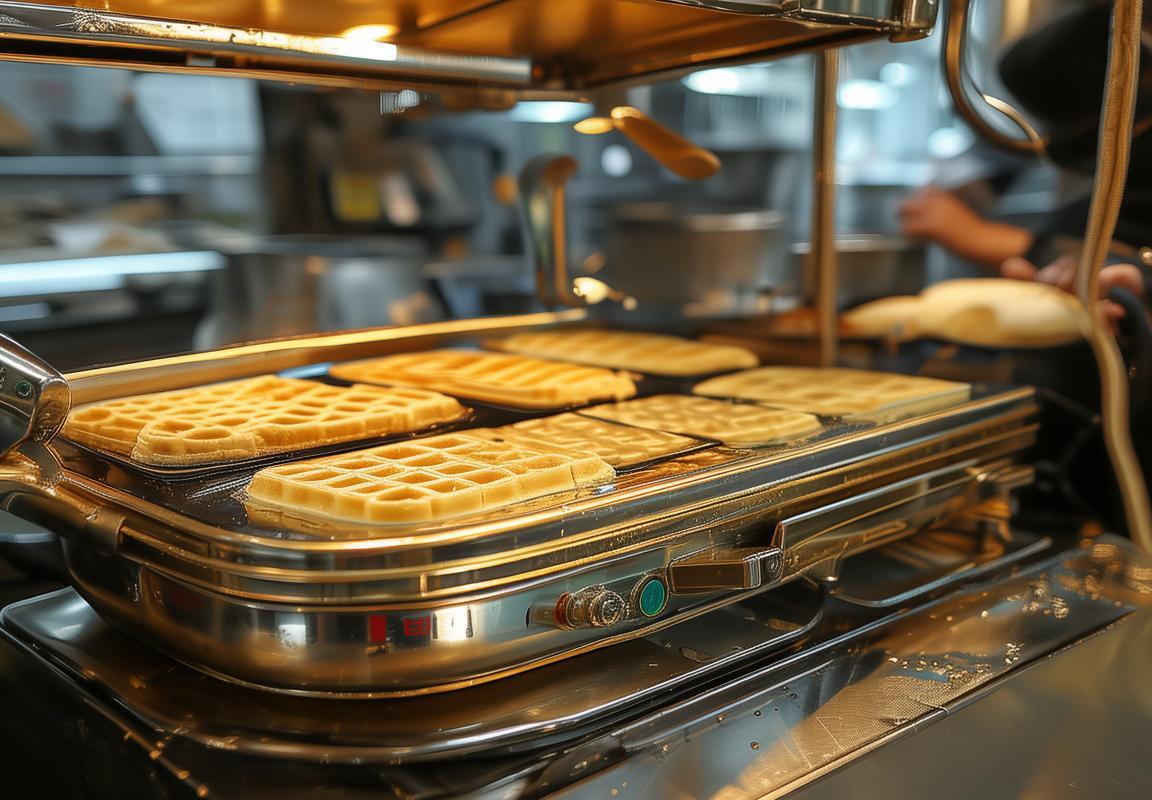
Market Dynamics in the European and American Kitchen Appliance Sectors
The European and American kitchen appliance sectors have seen a dynamic evolution, shaped by consumer preferences, technological advancements, and cultural shifts. From the bustling streets of New York to the cozy homes in Paris, these markets have their unique characteristics that drive their growth and innovation.
In Europe, the kitchen appliance market is characterized by a strong emphasis on energy efficiency and eco-friendly designs. Consumers are increasingly aware of the environmental impact of their appliances, leading to a surge in demand for energy-saving models. Brands like Bosch and Siemens have capitalized on this trend, offering a range of products that not only meet the stringent energy efficiency standards but also provide a seamless cooking experience.
On the other hand, the American market is marked by a preference for convenience and innovation. American consumers are always on the lookout for the latest gadgets that can simplify their lives. Smart appliances, such as refrigerators with built-in cameras and ovens that can be controlled via smartphone apps, have gained significant traction. Companies like GE and Whirlpool have been at the forefront of integrating smart technology into kitchen appliances.
The European kitchen appliance sector is also influenced by the diverse culinary traditions across the continent. From the rich baking heritage of Italy to the hearty stews of Germany, the variety of cooking styles has spurred the development of specialized appliances. For instance, the popularity of espresso machines in Italy has led to a niche market for high-quality, artisanal machines.
In the United States, the kitchen appliance market is heavily influenced by the foodservice industry. Commercial-grade appliances are often adapted for residential use, offering consumers the same performance and durability they would find in professional kitchens. This trend has been particularly evident in the rise of sous-vide cookers and high-end grills, which have become popular among home chefs.
Another key factor driving market dynamics in both regions is the rise of health and wellness. Consumers are increasingly interested in preparing homemade meals that are nutritious and free from preservatives. As a result, there has been a surge in demand for multi-functional appliances that can perform a variety of tasks, such as juicers, blenders, and slow cookers. Brands like Vitamix and Cuisinart have leveraged this trend by offering high-performance, versatile products.
Moreover, the kitchen appliance market in both Europe and America is witnessing a shift towards sustainability. As concerns about climate change grow, manufacturers are under pressure to reduce their carbon footprint. This has led to the development of appliances made from recycled materials, as well as those that are designed for easy disassembly and recycling at the end of their life cycle.
The retail landscape in both regions also plays a crucial role in shaping market dynamics. Online sales have been on the rise, with e-commerce platforms like Amazon and Alibaba becoming go-to destinations for consumers seeking convenience and variety. brick-and-mortar stores, however, remain a significant part of the market, with retailers like Williams-Sonoma and John Lewis offering a curated selection of premium appliances.
The European and American kitchen appliance sectors are not without their challenges. For one, the rapid pace of technological innovation can sometimes outstrip consumer adoption, leading to a glut of products that may not find a market. Additionally, the high cost of certain appliances can be a barrier for price-sensitive consumers.
Despite these challenges, the market for kitchen appliances in both Europe and America remains robust. The convergence of consumer demand, technological advancements, and cultural factors continues to drive growth and innovation in this dynamic sector. As long as manufacturers stay attuned to the evolving needs of their customers, the future looks bright for the kitchen appliance industry in both regions.
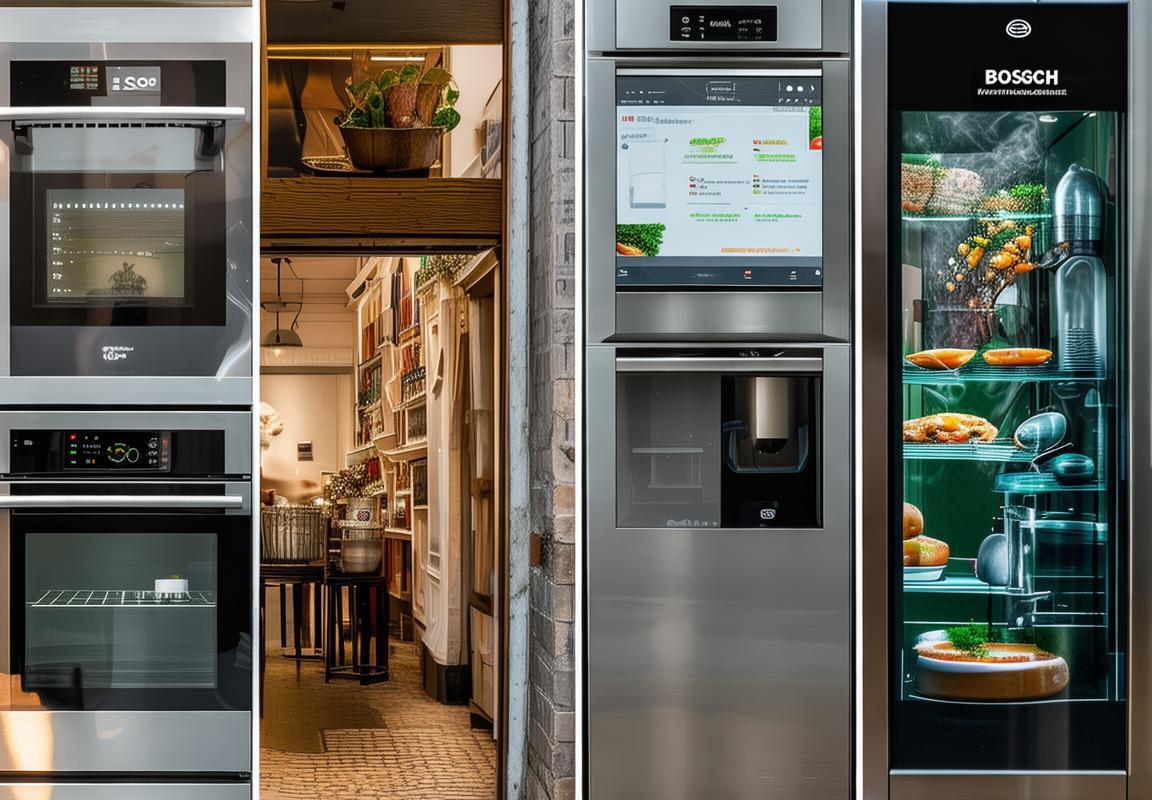
Key Features and Advantages of Industrial Waffle Makers
Industrial waffle makers have evolved far beyond the humble home appliances of yesteryears. Today, these machines are designed with a range of key features and advantages that cater to both commercial and industrial settings. From efficiency and durability to versatility and ease of use, here’s a closer look at what makes these waffle makers stand out.
Efficiency and Energy ConsumptionIndustrial waffle makers are engineered for high productivity, often featuring rapid heating elements that reach optimal temperatures in mere minutes. This efficiency not only ensures that batches of waffles are produced quickly but also contributes to lower energy consumption over time. With the ability to maintain a consistent temperature, these machines can churn out waffles at a steady pace without the need for frequent adjustments.
Large Batching and Production CapacityOne of the standout features of industrial waffle makers is their large batching capacity. These machines are designed to handle large volumes, making them ideal for busy cafes, restaurants, and catering services. With some models capable of producing up to 60 waffles per hour, these machines can meet the demands of high-traffic kitchens without skipping a beat.
Non-Stick Coating and Easy CleaningFor commercial use, the ease of cleaning is a crucial factor. Industrial waffle makers typically come with non-stick coatings that prevent waffles from sticking to the plates, ensuring that every batch is perfect. The smooth surfaces also make the cleaning process a breeze, as food residue can be easily scraped off and the machines can be washed with minimal effort.
Durable ConstructionIndustrial waffle makers are built to last. They are often constructed with heavy-duty materials like stainless steel, which is not only resistant to rust and corrosion but also withstands the rigors of frequent use. The sturdy build ensures that these machines can endure the heavy demands of a busy kitchen environment without failing.
Multiple Plate OptionsMany industrial waffle makers offer interchangeable plates, allowing for a variety of waffle shapes and sizes. From classic Belgian waffles to mini or heart-shaped ones, these machines can accommodate different preferences and menu items. This versatility is particularly appealing for businesses looking to diversify their offerings or cater to special requests.
Safety FeaturesSafety is a top priority in commercial kitchen equipment. Industrial waffle makers are equipped with features like automatic shut-off functions, which activate when the machine reaches unsafe temperatures or is left unattended. Some models also include cool-touch handles and guards to prevent accidental burns during operation.
Programmable SettingsFor precision and consistency, many industrial waffle makers come with programmable settings. Users can adjust temperature and timer settings to achieve the perfect waffle every time. This feature is especially useful for large-scale operations where maintaining a consistent product is crucial for customer satisfaction.
Maintenance and LongevityRegular maintenance is key to the longevity of any kitchen appliance. Industrial waffle makers are designed with this in mind, often featuring components that are easy to replace or maintain. Clear instructions and sometimes even included maintenance kits can help ensure that the machine remains in top condition for years to come.
User-Friendly DesignEven with all these advanced features, industrial waffle makers are designed with user-friendliness in mind. The controls are typically straightforward, with clear displays and easy-to-read buttons. This design allows operators to quickly and efficiently produce high-quality waffles without the need for extensive training.
Customization and BrandingFor businesses looking to add a personal touch, some industrial waffle makers offer branding options. Custom plates can be designed to feature a company logo or a specific theme, which can enhance the visual appeal of the waffles and even become a point of differentiation in the market.
In conclusion, the key features and advantages of industrial waffle makers are numerous. They offer efficiency, durability, versatility, and safety, making them a valuable asset in any commercial kitchen. With their ability to produce large batches of waffles quickly and consistently, these machines are not just a tool but a key component in the success of many food service operations.
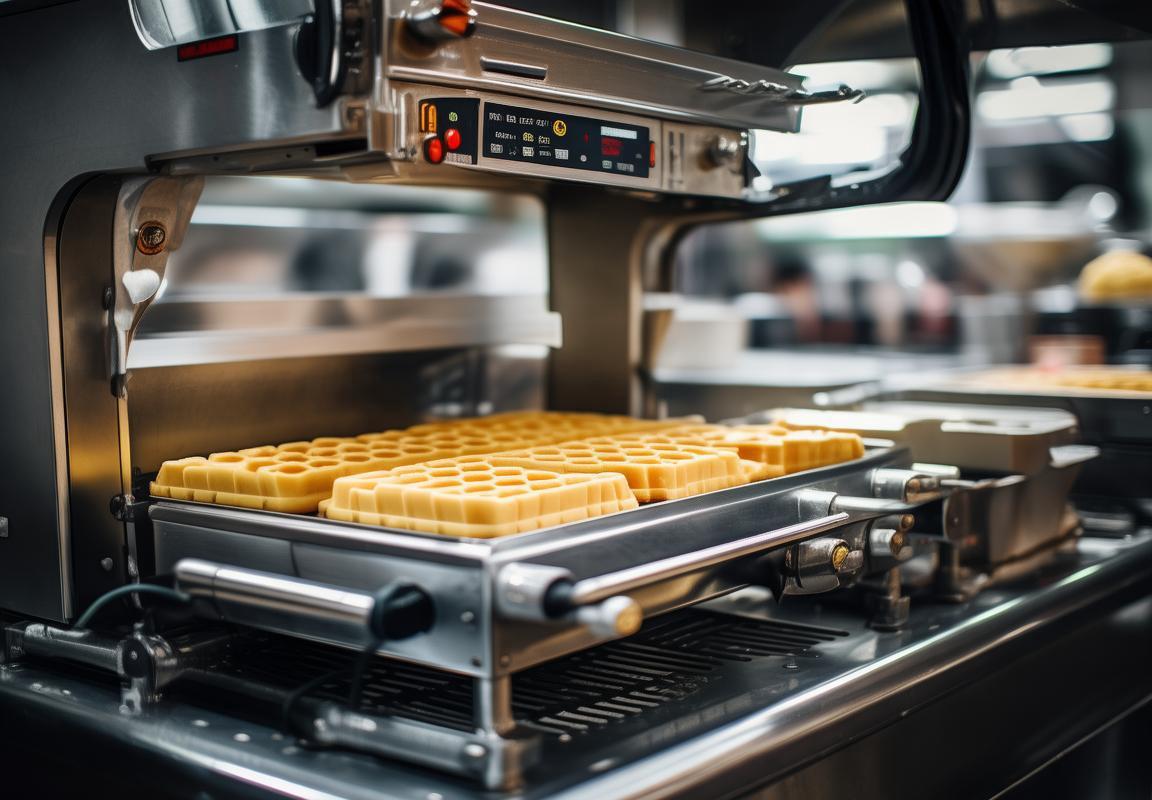
Consumer Trends and Preferences in the US and EU Markets
In the United States, there’s a noticeable shift towards healthier eating habits, which has influenced the kitchen appliance market significantly. Consumers are gravitating towards appliances that can cater to a variety of diets, including gluten-free, vegan, and paleo. This trend has led to a rise in demand for versatile industrial waffle makers that can produce different types of waffles, from classic Belgian to more innovative, health-conscious varieties.
European consumers, on the other hand, have a different set of preferences. They value sustainability and eco-friendly products. This is reflected in the kitchen appliance sector, with a growing interest in appliances that are energy-efficient and have a smaller carbon footprint. The market is seeing a surge in demand for appliances that use renewable energy sources and are made from recycled materials.
In both regions, there’s a strong emphasis on convenience. Busy lifestyles have spurred the need for quick and easy-to-use appliances. Industrial waffle makers that offer rapid heating times and intuitive controls are becoming increasingly popular. Consumers are looking for appliances that can save them time without compromising on quality or taste.
Smart technology is also making waves in both the US and EU markets. The integration of IoT (Internet of Things) in kitchen appliances allows for remote control, monitoring, and even predictive maintenance. This has led to a demand for industrial waffle makers that can connect to home automation systems, providing users with the ability to prepare their breakfast from their smartphones or smartwatches.
In the US, there’s a trend towards gourmet and artisanal foods, which has influenced the kitchen appliance market as well. Consumers are willing to invest in high-quality, professional-grade appliances that can produce restaurant-quality results at home. This has opened up a niche market for industrial waffle makers that offer premium features, such as adjustable heat settings, non-stick surfaces, and durable construction.
In Europe, the focus is more on innovation and the development of new functionalities. For instance, some industrial waffle makers now come with features like customizable waffle shapes, adjustable batter consistency, and even Bluetooth connectivity for syncing with recipe apps. These innovations cater to the desire for customization and personalization in kitchen appliances.
When it comes to brand preferences, there’s a strong preference for well-known and reputable brands in both the US and EU. Consumers look for appliances that offer reliability and a sense of quality. This is especially true in the industrial waffle maker market, where durability and performance are paramount.
The US market has a penchant for bold and colorful designs, which is reflected in the kitchen appliance sector. Consumers are drawn to appliances that not only perform well but also add a touch of style to their kitchen. Conversely, the European market tends to favor a more minimalist and understated aesthetic, with a focus on sleek lines and neutral colors.
In terms of price, there’s a wide range of options available in both regions, catering to different budgets. However, as technology advances and features become more sophisticated, there’s a growing segment of consumers willing to pay a premium for the latest innovations. This is particularly evident in the industrial waffle maker market, where the latest models often come with a higher price tag but offer significant advantages in terms of performance and functionality.
Lastly, the rise of social media and influencer marketing has had a profound impact on consumer preferences. In both the US and EU, consumers are influenced by what they see on platforms like Instagram, Pinterest, and TikTok. They are more likely to purchase products that are popular among influencers and have a strong online presence, which has led to a more dynamic and competitive market for industrial waffle makers.
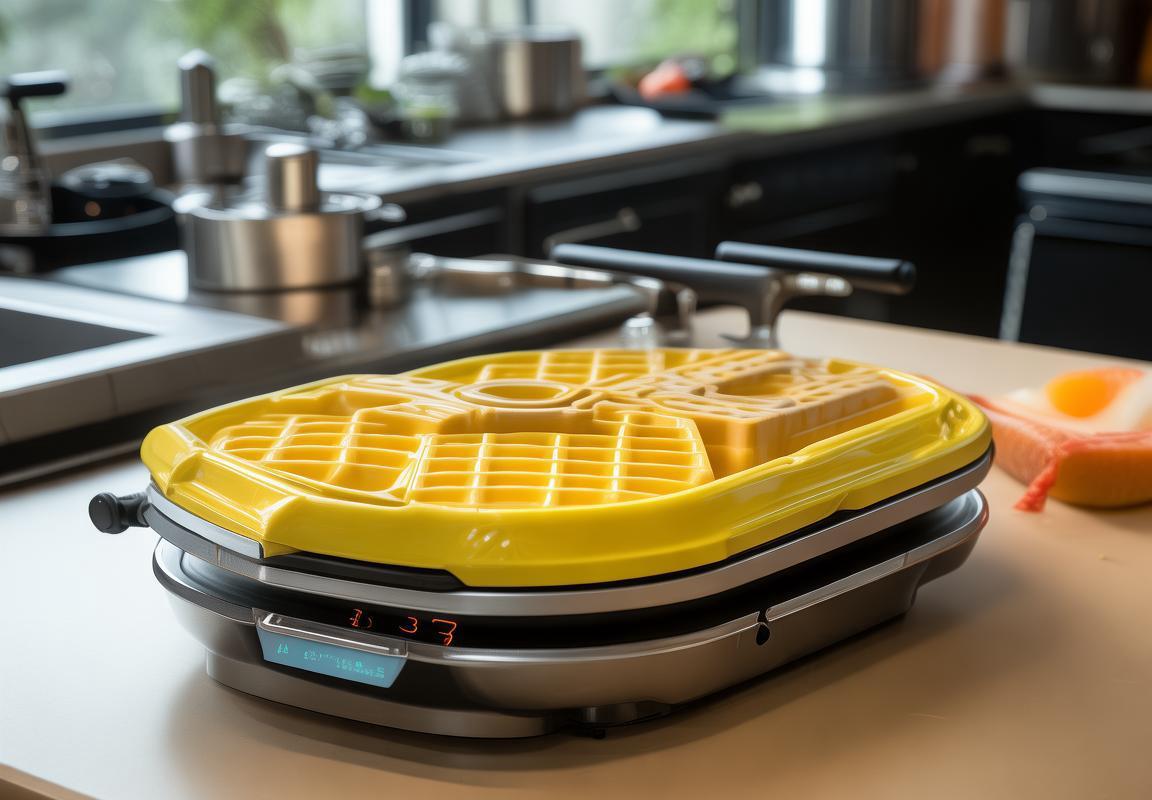
Data-Driven Insights into Market Growth and Sales Projections
The surge in the demand for smart kitchen appliances has been nothing short of remarkable. Sales figures reflect a steady climb, with a projected compound annual growth rate (CAGR) of 6.5% from 2021 to 2026. This upward trend is fueled by factors such as technological advancements, changing consumer lifestyles, and an increasing awareness of health and convenience.
In the US market, there’s a noticeable shift towards eco-friendly and energy-efficient appliances. Consumers are not just looking for products that save time but also those that are sustainable. A study by the Consumer Technology Association (CTA) indicates that over 50% of consumers are willing to pay more for energy-efficient appliances, showcasing a strong preference for environmentally conscious products.
Sales projections for smart kitchen appliances in the EU are equally impressive. With a projected market size of over $50 billion by 2025, the region is expected to be a significant growth driver. The rise of health-conscious consumers and the popularity of home cooking have played a pivotal role in this growth. Data from Euromonitor International reveals that the segment of health-focused kitchen appliances is growing at a faster pace than the overall market.
The integration of technology in kitchen appliances has become a game-changer. Smart ovens, for instance, are becoming increasingly popular due to their ability to connect to smartphones and provide cooking instructions based on weather conditions or recipe preferences. Sales of such smart appliances have seen a surge, with a year-over-year growth rate of 15% in 2022, according to a report by Statista.
When it comes to sales projections, it’s clear that the market is poised for substantial growth. The global smart kitchen appliances market is expected to reach $200 billion by 2027, with a CAGR of 9.2%. This projection is based on a comprehensive analysis of current market trends, technological advancements, and consumer behavior.
One cannot overlook the impact of the COVID-19 pandemic on market growth. The shift towards home cooking and the closure of restaurants and cafes led to a significant increase in the sale of kitchen appliances. According to a report by Grand View Research, the pandemic accelerated the adoption of kitchen appliances by 18% in 2020 alone.
The rise of e-commerce has also played a crucial role in market growth. Online sales of kitchen appliances have seen a dramatic increase, with a growth rate of 20% in the last two years. This trend is expected to continue, as more consumers turn to online platforms for convenience and variety.
In terms of regional sales projections, Asia Pacific is set to be the fastest-growing region, with a CAGR of 10.1% from 2021 to 2026. This is attributed to the rapid urbanization and increasing disposable incomes in countries like China and India. On the other hand, North America is expected to maintain its position as the largest market, driven by the high adoption rate of smart appliances and the willingness of consumers to invest in premium products.
The data-driven insights into market growth and sales projections paint a promising picture for the kitchen appliance industry. As technology continues to evolve and consumer preferences shift, the market is expected to witness further innovation and expansion. The key to success in this dynamic sector lies in understanding these trends and adapting to the changing landscape.

Case Studies: Successful Industrial Waffle Maker Brands in Europe and America
In Europe, the brand Waffleiro has made a significant mark with its industrial waffle makers. Known for their durable build and consistent performance, Waffleiro’s products are often found in commercial kitchens. Their success can be attributed to a focus on innovation, such as the introduction of programmable temperature controls that cater to various batter types and waffle preferences.
On the other side of the Atlantic, the American brand, Waffle Irons Inc., has gained a loyal customer base with their industrial waffle makers. They’ve managed to stand out by offering a variety of shapes and sizes, from classic Belgian to fun heart and animal-shaped waffles. Waffle Irons Inc.’s commitment to quality and customer satisfaction is evident in their customer testimonials and repeat business.
The UK-based company, Baking Bliss, has carved out a niche for itself by specializing in eco-friendly industrial waffle makers. Their commitment to sustainability has resonated with environmentally conscious consumers, and their products are often chosen for their energy efficiency and longevity.
In the Netherlands, the brand, WaffleWorks, has become synonymous with high-end industrial waffle makers. Their sleek designs and precision engineering have attracted both professional chefs and home enthusiasts. WaffleWorks’ ability to cater to the gourmet market has allowed them to charge premium prices, reflecting their high-quality craftsmanship.
The German brand, Kuchenmeister, has a long-standing reputation for producing robust and reliable industrial waffle makers. Their focus on German engineering and quality control has made them a go-to for commercial kitchens across Europe. Kuchenmeister’s products are often specified by chefs and restaurant managers for their durability and ease of use.
In the US, the brand, WaffleCraft, has thrived by offering a wide range of industrial waffle makers at competitive prices. Their ability to cater to both small-scale cafes and large-scale catering operations has helped them maintain a diverse customer base. WaffleCraft’s commitment to innovation is evident in their recent introduction of non-stick surfaces that reduce cleanup time and improve batter flow.
In France, the brand, GalettePro, has made a name for itself by specializing in waffle makers that can produce both waffles and galettes, a traditional French flatbread. This versatility has been a hit with bakeries and patisseries looking to diversify their offerings. GalettePro’s attention to detail, such as adjustable heat settings and non-slip bases, has made their products a favorite among professionals.
In the heart of Italy, the brand, Forno D’Amore, has become a staple in the industrial kitchen with their high-quality waffle makers. Known for their authentic Italian design and craftsmanship, Forno D’Amore’s products are often sought after for their ability to create a variety of waffle styles, from classic to artisanal.
In Canada, the brand, MapleWaffle Co., has capitalized on the popularity of maple syrup by offering waffle makers that can produce maple-infused waffles. This unique selling proposition has helped them gain a strong following in the region, particularly among maple syrup lovers.
Each of these brands has managed to carve out a unique position in the industrial waffle maker market by understanding their target audience, focusing on quality, and continuously innovating. Whether it’s through eco-friendly practices, gourmet designs, or competitive pricing, these successful brands have shown that there’s a place for everyone in the world of industrial waffle making.
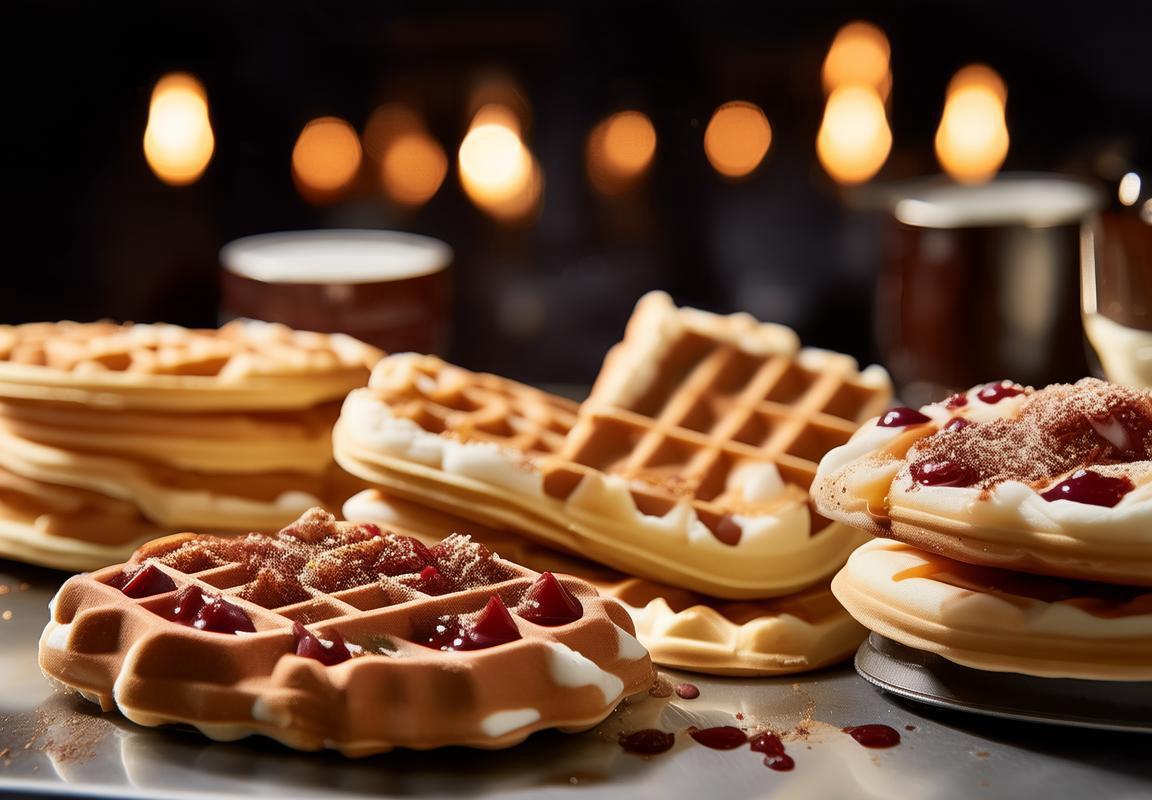
The Impact of Technology on Industrial Waffle Makers
The evolution of industrial waffle makers has been significantly influenced by technological advancements, reshaping the way these appliances are designed, operated, and perceived by consumers. From improved heating elements to smart features, the integration of technology has brought a host of benefits that have propelled the industry forward.
Heating Efficiency and ConsistencyEarly industrial waffle makers relied on simple, yet effective, heating elements that produced even heat distribution. However, with technological progress, these elements have become more sophisticated, offering precise temperature control. Modern waffle makers often feature advanced heating systems that ensure consistent results, reducing the risk of overcooked or undercooked waffles.
Smart Temperature ControlsThe introduction of smart temperature controls has been a game-changer in the industrial waffle maker market. These appliances can now maintain a specific temperature, which is crucial for achieving the perfect texture and color in every batch. Smart controls allow operators to set precise temperatures, which can be adjusted according to the type of batter or the desired waffle style.
Automated Batching SystemsTechnology has also led to the development of automated batching systems in industrial waffle makers. These systems can measure and pour the exact amount of batter required for each waffle, reducing waste and ensuring a consistent product every time. This feature is particularly valuable in commercial settings where speed and efficiency are paramount.
Non-Stick Coatings and Easy CleaningThe non-stick coatings found in modern industrial waffle makers are a direct result of technological advancements. These coatings make the cleaning process much easier and more efficient, saving time and resources for businesses. The latest coatings are designed to be durable and long-lasting, maintaining their non-stick properties even after repeated use.
Enhanced User InterfacesThe user interfaces in industrial waffle makers have become more intuitive and user-friendly. Modern appliances often feature digital displays that provide clear information about the current settings and status of the machine. Some models even come with touchscreens, allowing operators to adjust settings quickly and easily.
Energy EfficiencyEnergy efficiency has become a major focus in the development of industrial waffle makers. New technologies have led to appliances that consume less power while still maintaining high performance. This not only reduces operational costs for businesses but also contributes to a more sustainable approach to foodservice operations.
Customization and PersonalizationTechnology has enabled industrial waffle makers to offer greater customization and personalization options. With the ability to program specific settings for different types of waffles or batters, operators can cater to a wider range of customer preferences. This includes the ability to adjust the waffle’s thickness, pattern, and even the amount of batter used.
Remote Monitoring and MaintenanceThe integration of IoT (Internet of Things) technology allows for remote monitoring and maintenance of industrial waffle makers. Operators can check the status of their appliances from a distance, receive alerts for potential issues, and even schedule maintenance remotely. This ensures that the waffle makers are always in optimal condition, reducing downtime.
Safety FeaturesSafety has always been a top priority in the design of industrial waffle makers. Technological advancements have introduced new safety features, such as automatic shut-off mechanisms that activate if the machine overheats or is left unattended. These features provide peace of mind for both operators and customers.
Customer ExperienceThe ultimate impact of technology on industrial waffle makers is evident in the enhanced customer experience. With faster cooking times, consistent quality, and a variety of features that cater to different tastes and preferences, these appliances are contributing to a more enjoyable and satisfying dining experience.
In conclusion, technology has revolutionized the industrial waffle maker industry, driving innovation and efficiency. From heating elements to smart features, the integration of technology has made these appliances more reliable, versatile, and beneficial for both businesses and consumers. As technology continues to evolve, it’s clear that the future of industrial waffle makers will be even more exciting and advanced.
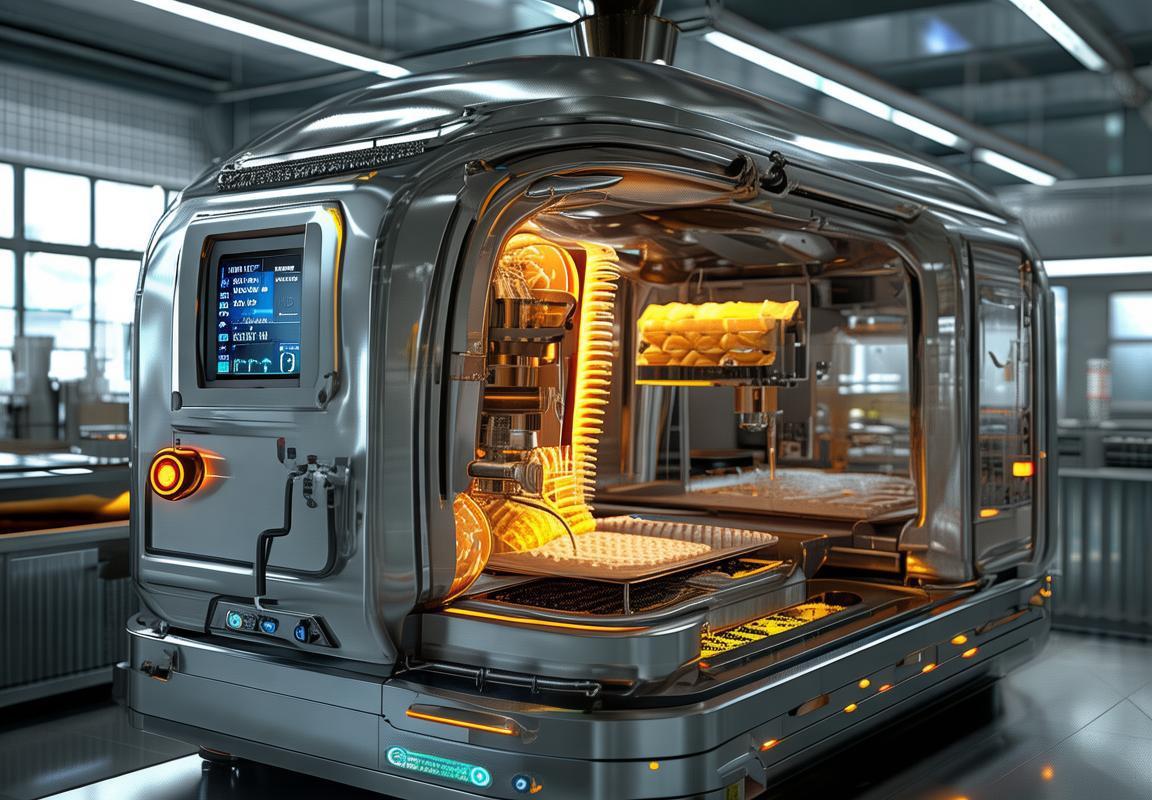
Distribution Channels and Retail Strategies for Industrial Waffle Makers
The world of industrial waffle makers has seen a transformation, with distribution channels and retail strategies playing a pivotal role in their success. From online marketplaces to specialized stores, the ways these products reach consumers have evolved significantly.
In the United States, the rise of e-commerce platforms like Amazon and eBay has been a game-changer for industrial waffle makers. Consumers can now easily browse through a vast array of options, read reviews, and make purchases with just a few clicks. This convenience has not only expanded the market reach but has also allowed for a more personalized shopping experience. Additionally, the ability to compare prices and features across different sellers has led to increased competition, which in turn benefits the consumer.
On the other hand, brick-and-mortar stores, particularly those catering to commercial kitchens and foodservice operators, remain a crucial distribution channel. Distributors and wholesalers play a vital role in ensuring that these industrial appliances are readily available to businesses. These channels often offer a higher level of customer service, including product demonstrations and after-sales support, which is essential for commercial buyers who require reliability and durability.
In Europe, the retail landscape is similarly diverse. Large retail chains such as Aldi and Lidl have gained popularity for their affordable prices and extensive product ranges, making industrial waffle makers accessible to a broader audience. These stores often have dedicated sections for catering equipment, which allows for easy navigation for customers who know exactly what they’re looking for.
Specialty kitchen stores and online retailers focused on commercial kitchenware have also seen growth. These shops often carry high-quality, professional-grade waffle makers, targeting chefs and foodservice professionals. The emphasis on quality and the promise of exceptional performance in a commercial setting are key selling points in these channels.
The rise of social media and influencer partnerships has opened new avenues for marketing and distribution. Influencers with a strong following in the culinary world can showcase industrial waffle makers in their content, reaching a captive audience of potential buyers. This form of marketing is particularly effective for highlighting the unique features and benefits of these appliances.
In terms of retail strategies, the focus has shifted towards cross-selling and bundling. Retailers are increasingly pairing industrial waffle makers with other kitchen appliances or accessories to create value-packed packages. This not only enhances the shopping experience but also encourages customers to invest in multiple products from the same brand or category.
Another significant trend is the emphasis on sustainability and eco-friendly practices. Retailers are highlighting the energy efficiency and durability of industrial waffle makers as part of their marketing campaigns. This appeals to environmentally conscious consumers who are looking for long-lasting and sustainable solutions for their commercial kitchens.
Moreover, the use of data analytics has become more prevalent in understanding consumer behavior and optimizing distribution channels. Retailers are using customer data to tailor their offerings, ensuring that the right products are available in the right locations. This data-driven approach has also helped in predicting trends and managing inventory levels more effectively.
Lastly, the integration of online and offline channels, known as omnichannel retailing, has become a cornerstone strategy for many retailers. By offering a seamless experience across multiple channels, customers can browse online, make a purchase in-store, or return items online, all while receiving consistent customer service.
In conclusion, the distribution channels and retail strategies for industrial waffle makers have diversified and adapted to changing consumer needs and preferences. The combination of e-commerce, traditional retail, social media, and data analytics has created a dynamic and competitive market that continues to grow and evolve.
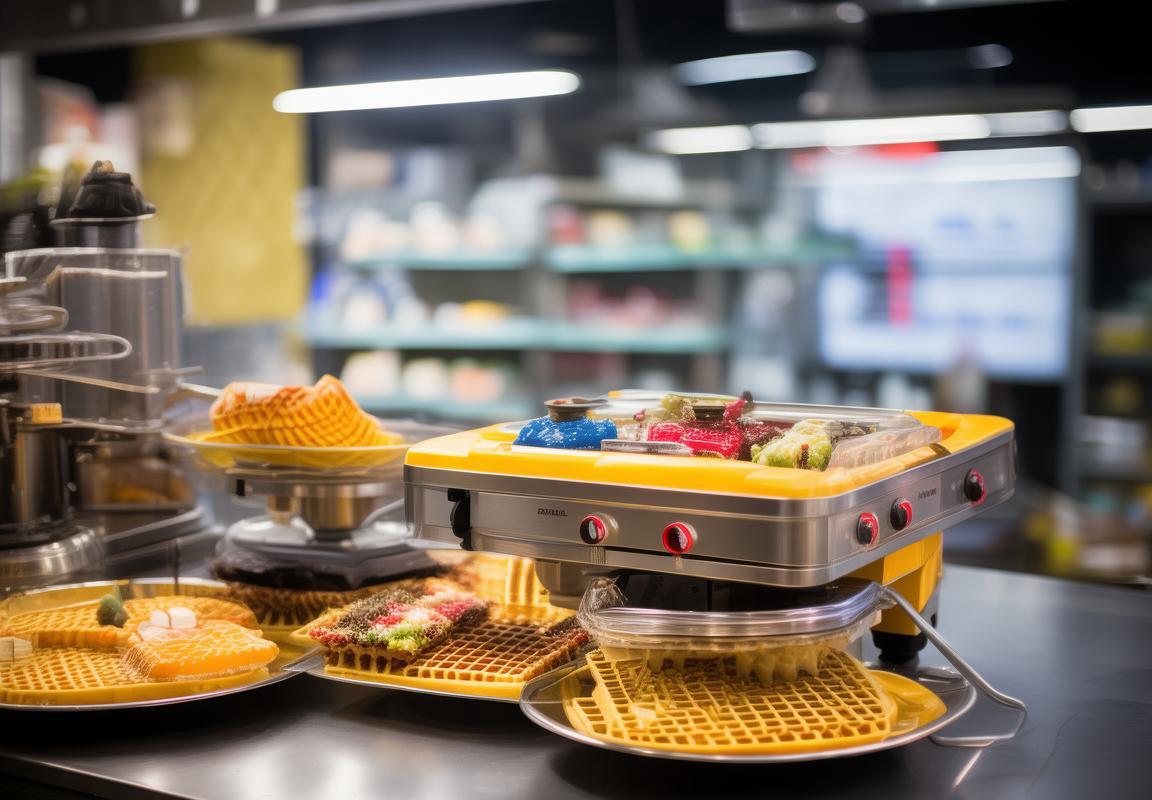
Future Outlook: Innovations and Challenges in the Industrial Waffle Maker Industry
In the evolving landscape of the industrial waffle maker industry, innovations are reshaping how these appliances are designed, produced, and consumed. As we look to the future, several trends and challenges are poised to influence the direction of this niche market.
Technological advancements are at the forefront, with smart features becoming increasingly common in industrial waffle makers. From programmable settings to Bluetooth connectivity, these innovations aim to enhance efficiency and convenience for users. For instance, a modern industrial waffle maker might be equipped with a user-friendly interface that allows operators to adjust temperature and timer settings remotely, optimizing production processes.
One significant challenge lies in the environmental impact of industrial appliances. As sustainability gains prominence, manufacturers are under pressure to create more energy-efficient waffle makers. This push for green technology means that companies must invest in research and development to reduce energy consumption without compromising on the quality and performance of their products.
Market demand is another dynamic factor. In the United States, for example, there’s a growing interest in artisanal and specialty foods, which could drive demand for industrial waffle makers that produce unique or high-quality waffles. Conversely, in Europe, where the foodservice industry is highly regulated, adhering to strict health and safety standards presents a challenge that must be addressed through innovative design and quality control.
E-commerce has also had a profound impact on the distribution channels for industrial waffle makers. Online sales platforms are becoming key outlets, allowing manufacturers to reach a broader audience and tap into the global market. However, this shift requires a strategic approach to ensure that the products are effectively marketed and delivered to customers, especially considering the need for after-sales support and maintenance.
The integration of mobile applications and online customer service is becoming a standard practice. These digital tools help users troubleshoot issues, access recipes, and even receive firmware updates for their appliances. While this integration enhances customer satisfaction, it also requires manufacturers to stay ahead of the curve in software development and customer service training.
Regulatory compliance is a constant challenge for the industry. Different countries have varying regulations regarding electrical appliances, which can complicate the production and distribution processes. Companies must navigate these complexities to ensure that their waffle makers meet all necessary safety and environmental standards.
One of the most pressing challenges is the need for skilled labor. As the industry becomes more technologically advanced, there’s a growing demand for workers with expertise in electronics, software, and mechanical engineering. This skill gap requires investment in training programs and may necessitate a shift in recruitment strategies to attract qualified personnel.
Another area of innovation is the customization of industrial waffle makers. Tailoring machines to specific customer needs, whether it’s for a particular type of waffle or for integration into existing kitchen layouts, can open new markets. However, it also means that manufacturers must balance customization with cost-effectiveness and scalability.
Finally, the industry must grapple with the rise of competitor products from various regions around the world. Globalization has led to increased competition, and companies must find ways to differentiate their products and maintain their market share. This could involve not only technological advancements but also a focus on brand loyalty, customer service, and market-specific strategies.
In conclusion, the industrial waffle maker industry is poised for growth, but it must navigate a complex mix of innovations and challenges. By staying adaptable and forward-thinking, manufacturers can continue to lead the way in a market that’s constantly evolving.